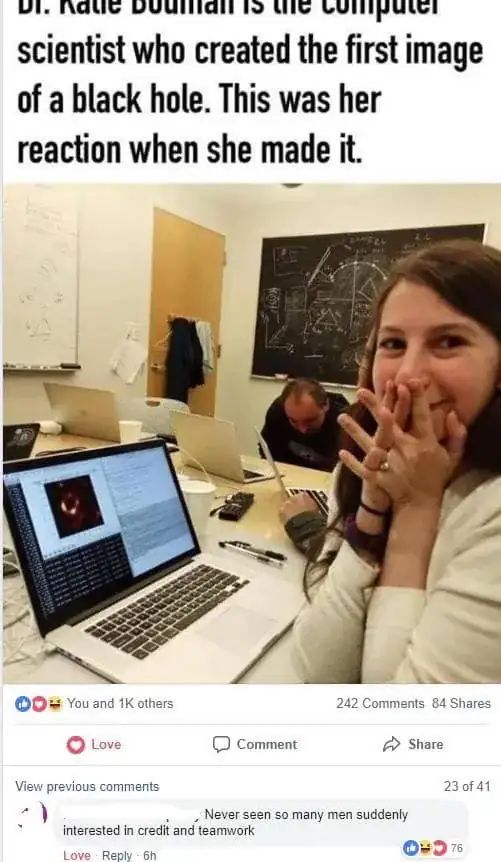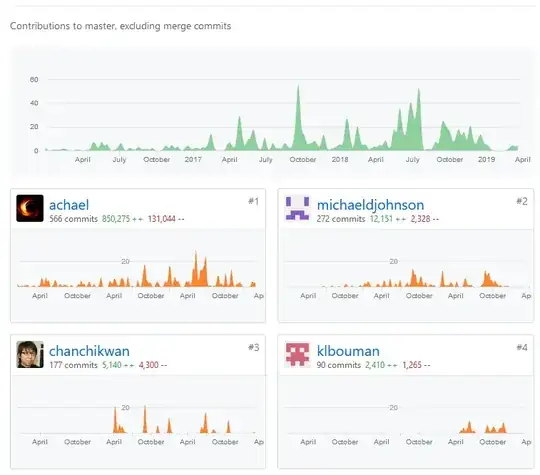The Event Horizon Telescope (EHT) was used to create an image of Messier 87*, a supermassive black hole in the Messier 87 galaxy. This result has been heavily reported in the media leading up to its announcement 2019-04-10.
Recent postings on social media have argued over who should receive credit for this work. Some have credited Katie Bouman for the image, which others have contested as overstating her contributions to the overall project.
For example:
According to data provided publicly by GitHub, Bouman made 2,410 contributions to the over 900,000 lines of code required to create the first-of-its-kind black hole image, or 0.26 per cent. Bouman’s contributions also occurred toward the end of the work on the code.In contrast, contributor Andrew Chael wrote over 850,000 lines of code. While CNN attempted to give Bouman full credit, explaining “That’s where Bouman’s algorithm — along with several others — came in,” they slyly admitted that fellow researchers told CNN “‘(Bouman) was a major part of one of the imaging subteams,'” even after CNN incorrectly wrote on the previous line that she was on one of the “imaging teams,” not subteams.
This analysis seems to disregard the way collaborative scientific research actually works; are the metrics being discussed sufficient to measure this kind of contribution, or the impact someone has on a project of this nature?

